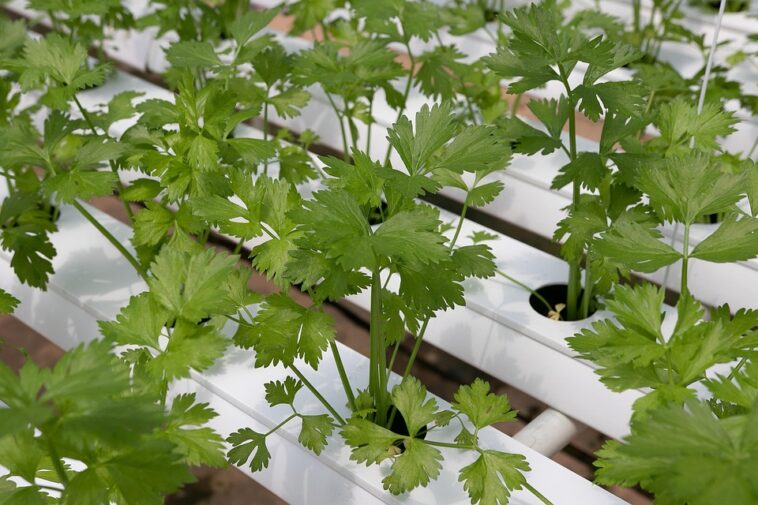I still remember the first time I tasted Vietnamese coriander. It was in a steaming bowl of phở at a tiny restaurant tucked away in the backstreets of Ho Chi Minh City. The herb had this unmistakable peppery zing—bold and refreshing, kind of like regular cilantro but with a spicy, citrusy twist. From that moment on, I was hooked.
Back home, though, Vietnamese coriander (also called Persicaria odorata, rau răm in Vietnamese) wasn’t exactly easy to find. It’s not the kind of herb you’ll see lined up neatly next to parsley and thyme at the grocery store. So naturally, I decided to grow my own. And let me tell you: once you learn how to grow Vietnamese coriander from cuttings, you’ll never need to hunt for it again.
What Makes Vietnamese Coriander So Special?
This isn’t your average herb. Unlike traditional cilantro, which bolts and goes bitter in the heat, Vietnamese coriander thrives in warm, humid weather. It’s perfect for tropical or subtropical gardens, and in containers, it can easily be grown year-round indoors.
The leaves are slender, pointed, and sometimes have a dark maroon blotch in the center—like nature’s own little inkblot test. The flavor is intense, somewhere between cilantro and lemongrass with a dash of pepper. It’s fantastic in soups, salads, rice dishes, and even tucked into a summer roll.
And the best part? You can grow it from cuttings. No need for seeds or fancy equipment—just a healthy stem, some water, and a little patience.
Step 1: Finding a Good Cutting
The first step is getting your hands on some fresh Vietnamese coriander. I was lucky—my local Asian market sometimes sells small bunches in the refrigerated herb section. But if you have a Vietnamese neighbor or friend with a backyard patch, even better. Ask for a cutting or two. They root quickly, and one cutting can grow into a full, flourishing plant in no time.
You’ll want to look for stems that are green and firm, not woody or wilted. Ideally, your cutting should be about 4 to 6 inches long with a few sets of leaves and at least one or two nodes (those little bumps where leaves grow out of the stem).
Trim off the bottom leaves, leaving just a few at the top. You don’t want any leaves submerged in water—that’s a recipe for rot.
Step 2: Rooting the Cutting in Water
This is the fun part—watching roots grow. Fill a clean glass or jar with about an inch or two of water and place your cutting inside, making sure at least one node is submerged. I usually place the glass on my kitchen windowsill where it gets bright, indirect light. Direct sunlight can be a bit harsh at this stage, especially if you’re starting in summer.
Change the water every couple of days to keep it fresh and prevent bacterial buildup. In a week or so, you should start seeing little white roots sprouting from the nodes. Sometimes it takes a bit longer, especially if the weather is cool, so don’t panic if it takes two weeks.
Tip: If you’re rooting several cuttings, space them out in the glass to give each one room to breathe. I’ve made the mistake of crowding mine before, and a few stems turned mushy.
Step 3: Transplanting to Soil
Once your roots are at least an inch long, it’s time to move your new plant into soil. I get a little thrill every time I do this—it’s like giving your plant a new home.
Use a small pot (4 to 6 inches wide is perfect to start) with drainage holes, and fill it with a light, well-draining potting mix. I usually mix in a bit of compost or worm castings to give the young roots a gentle nutrient boost.
Make a small hole in the soil with your finger or a stick, gently place the rooted cutting inside, and firm the soil around it. Water it well after planting, and keep the soil moist (but not soggy) as your plant adjusts.
You can keep the pot indoors near a sunny window or outside in partial shade. Vietnamese coriander likes warmth and humidity, so I sometimes mist the leaves with a spray bottle if the air feels too dry.
Step 4: Long-Term Care and Harvesting
Once established, Vietnamese coriander is surprisingly low-maintenance. It loves heat and humidity, and once it gets going, it grows fast—sometimes too fast! In tropical climates, it can become a bit invasive, so I keep mine in containers to control the spread.
Watering: This plant loves moisture. During hot weather, I water it daily. In cooler months or if it’s kept indoors, I scale back to every couple of days, depending on how quickly the soil dries out.
Light: Outdoors, Vietnamese coriander prefers partial shade. If it gets too much direct sun, especially in the peak of summer, the leaves can scorch. Indoors, a bright east- or west-facing window works well.
Fertilizer: I feed mine with a diluted organic liquid fertilizer about once a month during the growing season. It’s not picky, but a little boost keeps the leaves lush and flavorful.
Harvesting: You can start snipping leaves once the plant has about 6 inches of growth. Use scissors or pinch off the top few inches to encourage branching. The more you harvest, the bushier and more productive it becomes.
Troubleshooting and Tips
- Leggy growth? It might need more light. Move it to a brighter spot or supplement with a grow light.
- Limp or yellowing leaves? Check for overwatering or poor drainage.
- Cold snaps? This herb is not frost-tolerant. If temps drop below 50°F (10°C), bring it inside or cover it outdoors.
And here’s something I learned the hard way: Vietnamese coriander doesn’t like to dry out. If the soil stays dry for too long, the leaves can become tough and bitter. Keep it consistently moist for the best flavor.
Final Thoughts
Growing Vietnamese coriander from cuttings has been one of the most rewarding gardening experiments I’ve ever tried. There’s something deeply satisfying about taking a humble stem, rooting it in water, and watching it flourish into a leafy, fragrant herb that keeps giving back.
If you love Southeast Asian cooking or just want to expand your herb garden with something a little different, I highly recommend giving this plant a try. It’s beautiful, useful, and wonderfully easy to grow—even for beginners.
And who knows? Maybe one day you’ll be sharing your own cuttings with a curious neighbor, just like someone did for me.


